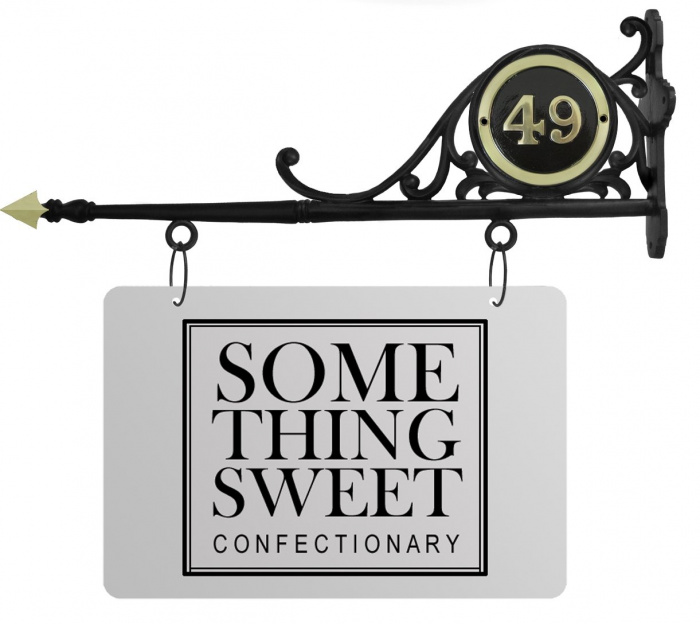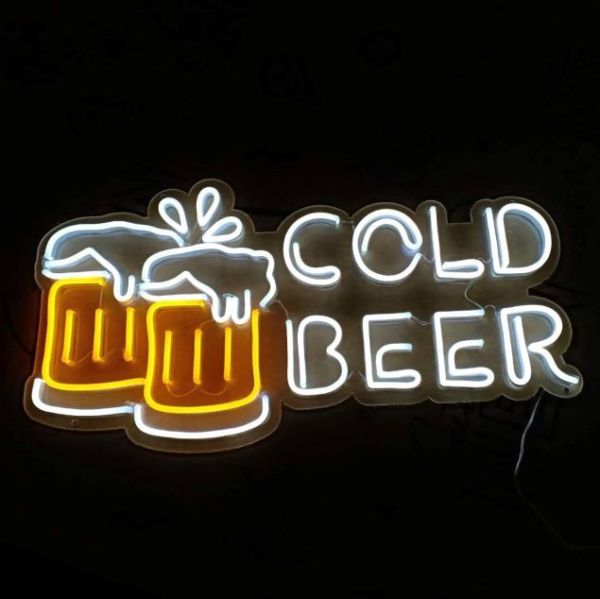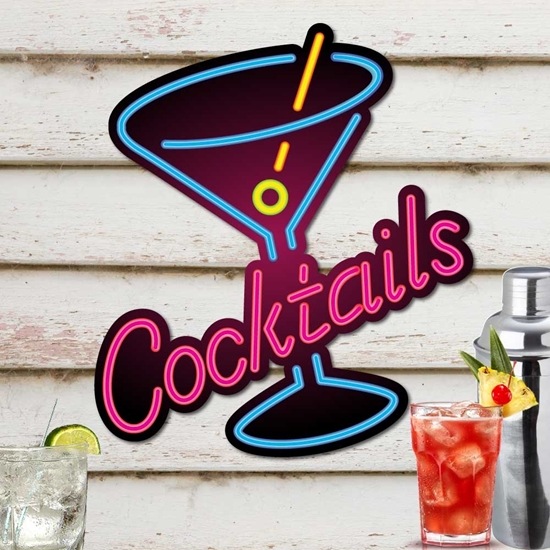Good Advice On Deciding On Hanging Signs
Good Advice On Deciding On Hanging Signs
Blog Article
What's The Difference In Size Between Bar Signs?
The size of bar signs varies in relation to their purpose the location, their purpose, and aesthetics. The following are the ways that different sizes influence bar signs in terms of function and style. The Big Sign
Use to draw attention to a particular region and to serve as a central point.
Uses External branding, primary brand signs or feature walls.
Placement: These are usually installed on walls or larger areas outside the bar to draw customers.
Examples: huge neon signs vintage-style signs, mural-type signs.
2. Medium Signs
The purpose is to add information, or enhance the decor without taking up the space.
Uses: Menu boards and directional signage.
Placement: Positioned in a way that is easy to see but not overpowering. For example, behind the bar, above seating areas or on walls with feature features.
You can make use of decorative signs or metal signs to promote your bar.
3. Small Signs
The purpose is to add subtle decorative elements or to give specific details.
Uses: Table signs, decorative objects, labels, etc.
The table or on shelves where close-up view is required.
You can use small quotes or drink menus as examples.
Size Aspects
Visibility
Large Signs: They are designed to be visible from a distance. This makes the perfect choice for attracting people and establishing the bar's presence.
Medium Signs They are able to balance the need for information and space efficiency. They do this without overwhelming decor.
Small signs are the best choice for providing information with close proximity and intimate specifics. This will improve the user experience.
Proportion
To keep smaller spaces from being overwhelmed Large signs must be in proportion to the size of the area. Great for open or large spaces.
Medium Signs They are ideal for many interior areas. They can be placed in various ways.
Small signs are perfect to provide more detail and be placed in tighter spaces.
Impact
Signs are bold and big. They are a statement. Often used to establish the tone for the bar.
Medium Signs Creates an appropriate balance between design and visibility, contributing to the overall atmosphere while also conveying important information.
Small signs: Add charm and details that create a more enthralling visual experience.
Practicality
Large Signs: require substantial mounting solutions and can be more costly due to the size and the materials.
Medium Signs: Simple to set up, reposition and offer flexibility with modifications to the design.
Small signs are perfect for locations that are constantly changing like bars, which frequently change their menus and promotions.
Functionality
Large Signs: Mostly used to increase visibility and attract attention.
Medium Signs: They're both decorative and functional. They provide essential information, while also enhancing the aesthetics.
Small Signs can be used to provide detailed information. They can also be employed to add subtle decor and thematic.
The proper size of a bar sign depends on its intended purpose, the design of the space, and the impression desired by the patrons. By keeping these elements in check you can make sure that the signs contribute effectively to the ambience of the bar as well as operational requirements. View the top rated bar sign hanging for website tips including to the pub sign, pub sign design ideas, the staying inn bar sign, personalised pub signs for sale, personalised hanging pub signs, cocktail bar sign, hanging pub signs for sale, personalised signs for home bar, personalised garden bar signs, bespoke bar signs and more.
What Is The Difference Between Bar Signs In Terms Lighting?
The bar signs differ greatly when it comes to lighting. This affects their visibility and ambiance as well as their overall impact. Here are some of the most significant ways lighting impacts bar signs. Neon Signs
Characteristics: Bright, colorful, classic.
Lighting: Make use of gas tubes filled with neon that emit light when they are electrically charged.
Uses: Ideal to create a vintage or retro style, commonly used to create logos, bar names, and striking designs.
Advantages: Highly noticeable, even from afar, and a nostalgic appeal.
Advantages: They can be damaged and be costly to repair.
2. LED Signs
Characteristics: Energy-efficient, versatile, modern.
Lighting: Utilizes light emitting diodes to produce brilliant light.
Uses: Perfect for outdoor and indoor signage, programmable displays and dynamic lighting effects.
Benefits include: long-lasting, energy-efficient. Animations as well as color shifts can be programed.
Advantages: May be expensive initially, but can help you save money on maintenance and energy costs.
3. Backlit Signs
Characteristics: Elegant, sophisticated, subtle.
Lighting: A transparent surface is lit by fluoro or LED lights to produce an ethereal glowing.
Uses: Often used for the menu boards or contemporary bar signs.
Benefits: Increases the accessibility of small print in dim lighting conditions.
The installation is more complex and the upfront cost is more expensive.
4. Signs for Edge-Lit
Characteristics: Sleek, contemporary, stylish.
Lighting: Illuminates the edges of a panel sign (usually acrylic) with LEDs.
Uses: Ideal for modern, minimalist designs. Used for informational or directional signage.
Benefits: Energy efficient, it gives an attractive and elegant appearance.
Advantages
5. Ambient/Accent Lighting
Characteristics: Subtle, atmospheric, decorative.
Lighting: Make use of indirect light sources to highlight or accentuate signs.
Uses for this product: It enhances the ambience It is often used to emphasize the theme of decor or artwork.
Advantages: Can create an inviting and warm environment.
Negatives: Direct lighting may not be enough for reading.
6. Marquees, Signs
Characteristics: Bold, theatrical, eye-catching.
Lighting: Uses multiple LEDs and light bulbs to illuminate the sign.
They are used to advertise outdoor events, creating vintage movie looks, and event promotions.
Benefits: Very visible and attention-grabbing.
Some disadvantages include high costs and regular maintenance.
7. Projection Signs
Characteristics: Dynamic, innovative, versatile.
Lighting: Projectors are used to project light and images on the surface.
Uses: Can be used for events and promotions that are only temporary.
Advantages: Easy to change and no sign structure required.
Disadvantages
8. Fluorescent Signs
Characteristics: Bright, cost-effective, traditional.
Lighting: Utilizes fluorescent tubes for illumination.
Usage: Most often used for large indoor and outdoor signs.
Large signs are beautiful and appealing and reasonably priced.
Negatives : They are less efficient in terms of energy efficiency than LEDs and can produce an unnatural lighting.
Lighting Things to Consider
Visibility
Neon and LED signs are great for grabbing the attention of people from afar, especially when it is dark.
Signs with a backlit or edge lit are great for improving visibility and creating a an appearance that is professional.
Energy Efficiency
LED Signs: Energy-efficient and long-lasting.
Neon and fluorescent signs Neon is not as energy efficient.
Aesthetic Appeal
Neon and marquee signs are ideal for retro and vintage styles.
Signs that are backlit or edge-lit Perfect for contemporary, modern designs.
Ambient Lighting: Enhances the overall ambience and atmosphere.
Maintenance
LED Signs: Low-maintenance and durable.
Neon signs as well as fluorescent signs They require more frequent upkeep and repairs could be possible.
Cost
Backlit and LED Signs: Costs upfront are higher, but they are lower operating costs.
Fluorescent signs: lower initial costs but higher energy costs over the long term.
Flexibility
Projection LED Signs as well as LED Signs that can be programmed Provide flexibility and high-dynamic content for display.
Traditional Signs Less flexible than other kinds of signs, they offer more of a specific appearance.
Bar owners can increase the visibility of their bars and create the atmosphere they desire by choosing the correct type of bar sign lighting. They are also able to effectively convey their brand's name as well as promotions and other details to patrons. View the best the full details on garden bar signs for blog recommendations including design a pub sign, personalised hanging pub signs, the pub sign, personalised cocktail bar sign, home bar pub signs, bar signs for garden, bar signs for garden, garden bar signs, large pub sign, the staying inn sign and more.
What Are The Differences Between Bar Signs And Regulations?
There are numerous laws that govern bar signs. These include state, local and federal laws to guarantee public safety and aesthetic standards. Here's how bar signs differ in terms of regulations:1. There are rules regarding the size and placement of signs.
Zoning law: It is a set of rules that dictates where signs can go and their height, size and distances from property lines and other buildings.
Historic Districts. Signs of all sizes or designs and materials may be prohibited in order to preserve the historic nature.
2. Illumination Restrictions
Light Pollution: Regulations may restrict the brightness, color and time of illuminated signs to minimize light pollution and preserve the nighttime ambience.
Safety: Signs near roadways and other areas should be designed to minimize the appearance of glare or distracting signs that could cause danger for motorists or pedestrians.
3. Content from the Signage
Alcohol Advertising: Alcohol advertisements are restricted in certain jurisdictions. They are prohibited from using images or content which may be attractive to minors, or promote excessive drinking.
Health Warnings - Laws may require the posting of health warnings on warnings about alcohol consumption or smoking.
4. Historic Preservation Regulations
Signs that are placed in historic districts should be in harmony with their architectural style. This is usually performed by preservation boards or commissions.
Signs can be restricted in regards to their material, design, and colors in order to protect the integrity of history.
5. Sign Permitting Process
Permit Requirements Bar owners need to obtain permits prior to installing or alter signs. This could require paying costs, making submissions, and getting approval from local authorities.
Code Compliance: Signs need to be in compliance with the codes for building and fire safety regulations as and accessibility standards to protect the public and ensure accessibility for people with disabilities.
6. Sign Removal Repair, Maintenance and Removal
Maintenance Requirements Owners of bars need to keep their signs in good condition and ensure that they are sturdy and free of dangers. Additionally, they must comply with the rules.
Signs that are abandoned: Regulations could regulate the removal of abandoned or dilapidated signs to prevent blight and maintain the beauty of the location.
7. Digital Signage Regulations
Content Restrictions. There are laws that restrict the type of content displayed by digital signs. The laws may prohibit flashing light or offensive imagery.
Limitations on operation: Regulations may limit the intensity, speed or frequency at the time digital signs change in order to minimize visual clutter.
8. Enforcement and Penalties
Inspections are conducted by local authorities in order to check the compliance of signage laws. Infractions can be punished.
Penalties include fines and the issuance of citations if you do not comply with. It is also possible to be required to remove signs or change their design or face legal sanctions.
9. Procedure for Signing Variance
Variance applications bar owners who wish to deviate their signage from the rules can do so by requesting a variance. Justification must be provided along with any adverse impact on public security or appearance should be minimized.
Public Input: Some variations may require community input like public hearings, comments from property owners or business associations, or even remarks from members of the community.
10. Engagement and participation of the Community
Public Consultation: Some areas involve residents in the design of regulations for signage through public meetings, surveys, or stakeholder consultations.
Community Benefits: Sign regulations can incorporate provisions to enhance the visual quality of signs or promote local businesses or aid in revitalizing neighborhood initiatives.
If they adhere to and understand the guidelines for signs the bar proprietors can ensure that their signs add aesthetic attraction to their establishments. make a positive contribution to the local community and meet legal specifications. This will reduce the risk of fines, legal issues or penalties. Take a look at the best bar sign outdoor hints for website info including hanging pub signs for garden, pub sign design ideas, hanging pub signs for sale, large pub sign, bar sign hanging, the staying inn bar sign, personalised home bar signs, indoor bar signs, make a pub sign, personalised bar signs and more.